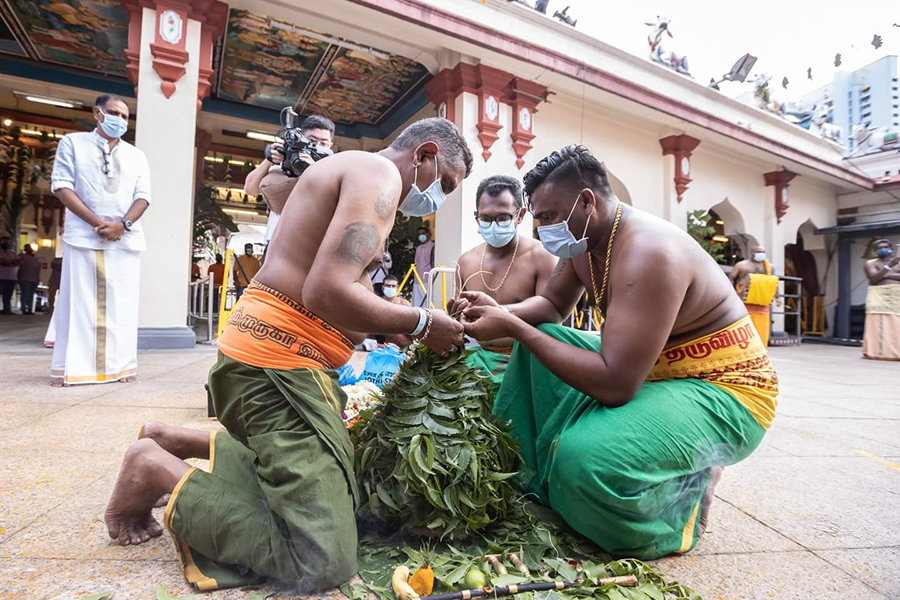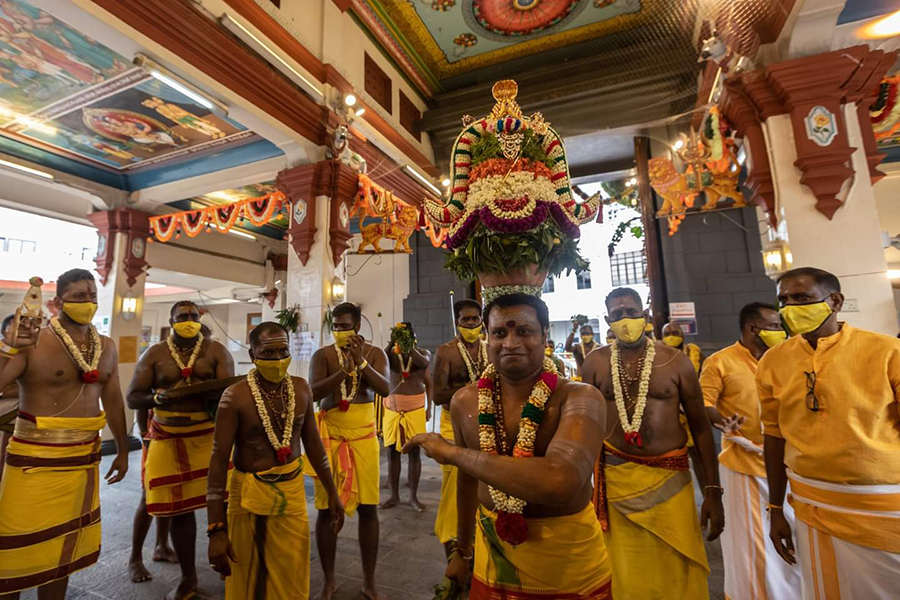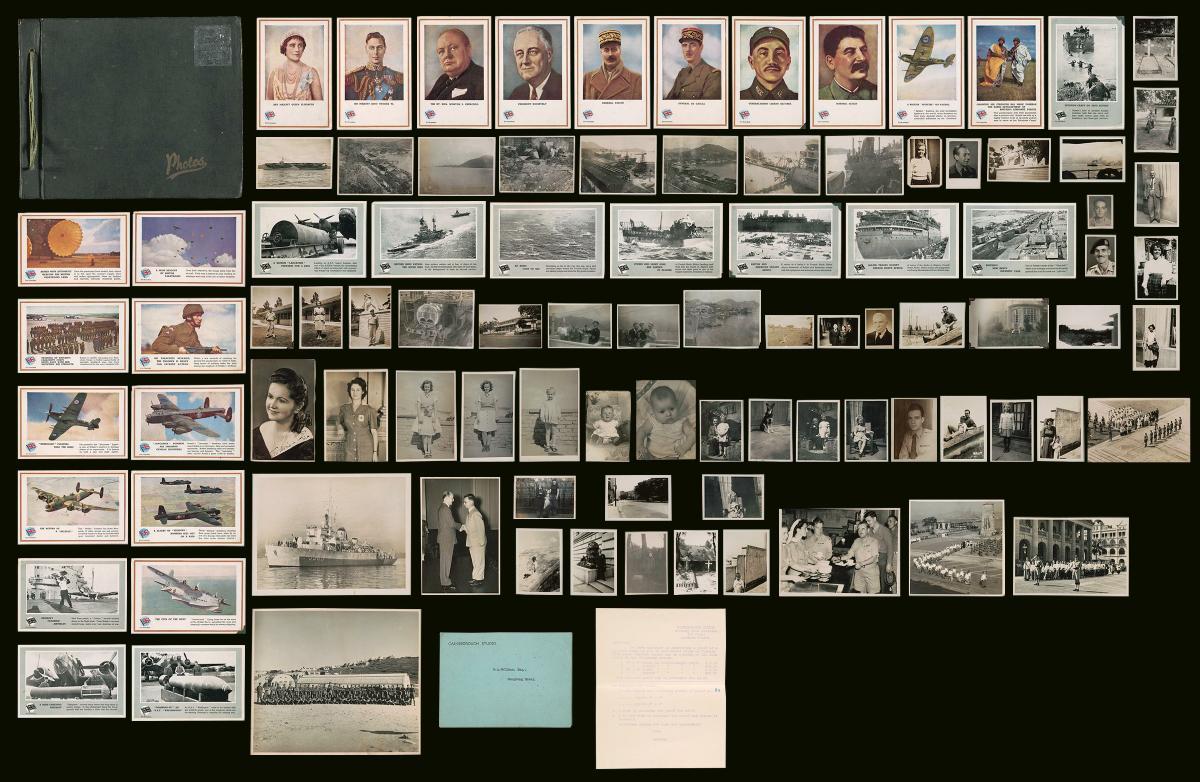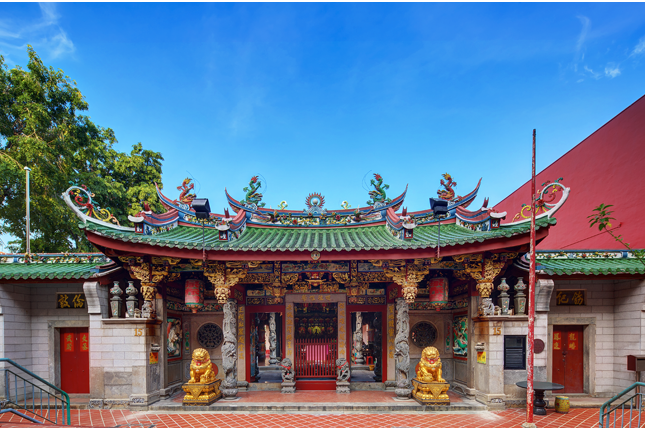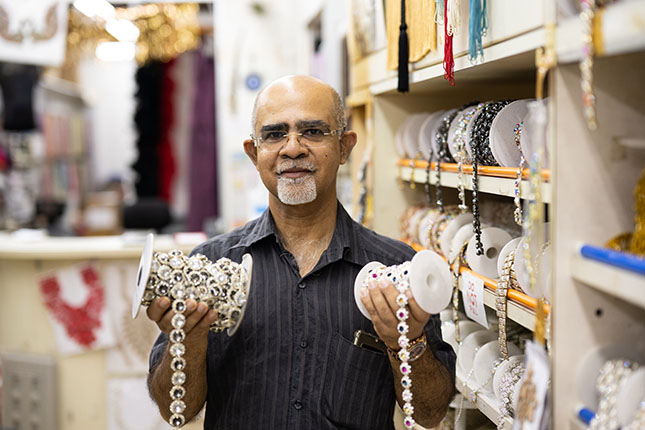Craft and Practices related to Karagam
Believed to symbolise the Hindu goddess Mariamman, the Karagam is a vessel of water filled with sacred offerings, intricately tied and decorated with flowers, and balanced on the head of a pandaram (priest) (for the sakthi karagam) or a performer (for the aatta karagam) in an accompanying ritualistic dance known as Karagattam. The craft and practices related to karagam are a blend of elements which involve an intricate knowledge of traditional craftsmanship in constructing the karagam, as well as knowledge of traditional performing arts in the accompanying dance form. There are two main types of karagam: ‘aatta karagam’ which is usually prepared for and performed at cultural and performing arts events, and ‘sakthi karagam’ which has a deeply religious significance to the Hindu community, and is prepared for and performed in temples and in conjunction with religious events such as Theemithi (Firewalking Festival).
Geographic Location
The karagam, and its accompanying dance karagattam, is an ancient and traditional craft and art form originating in the south Indian state of Tamil Nadu, having been referenced in the Sangam Literature, a collection of 2381 seminal poems composed from as early as 300 BC. In Hindu temples across India and the world, it is customary for devotees to invoke the blessing of the temple’s guardian deity before the onset of any major festival, and the karagam is a sacred object used and karagattam is a corresponding dance performed in such rituals to attain this. The practices and craft related to karagam can be found across countries with a sizeable Tamil-Hindu diaspora such as Malaysia, Sri Lanka, and South Africa, to name a few.
Communities Involved
The practitioners who prepare the karagam play a pivotal role in Theemithi and other Hindu festivals, as they create a visually striking representation of the goddess in the form of the karagam, which will then be carried on the head of the chief pandaram (priest) as he performs the karagattam dance and leads a contingent of over four-thousand devotees across the fire-pit annually. It is believed that the festival will run smoothly only after the karagam (carried by the chief pandaram) crosses the fire-pit safely and successfully. The practitioners often share a close consultative relationship with the temple management committee and the community of devotees to better understand what the festival’s organisers and participating devotees look for in the creation of the karagam. These consultative efforts allow the practitioners to produce distinctive forms of the karagam that best represent the goddess and meet the unique requirements of each festival.
Associated Social and Cultural Practices
Karagam translates to “water-vessel,” and is prepared with a brass pot filled with water and sacred offerings such as betel leaves, betel nuts, a banana, a coin, and then stuffed with either neem or mango leaves, conscientiously tied together and decorated with flowers, and finally, with the placement of a lime at the top. Once complete, the karagam is believed to be a manifestation of the goddess Mariamman, with the lime symbolising the head of the goddess, and is worshipped by devotees as such. The karagam serves as the focal-point of Theemithi, having been part of the rituals and practices of Theemithi in Singapore from the inaugural festival in 1840 up till today.
The assembly of a karagam involves an intricate process of planning, preparation, tying, and decoration - all stemmed from knowledge and practices which have been transmitted from one generation of practitioners to the next. In addition to the assembly of the karagam, the dance form known as karagattam is performed as a corresponding practice. Once the completed karagam is placed on the head of the chief pandaram (priest), and he then performs the ritualistic dance in praise of the goddess Mariamman. The dance is typically accompanied by traditional Carnatic music such as the nadhaswaram (a double reed wind instrument) and thavil (a barrel-shaped percussion instrument) and is regarded as a way to pay tribute to the goddess, and simultaneously, raise the spirits of the devotees involved in the festival. It is believed that such detailed and intrinsically orchestrated dance recitals with the karagam serves to please the goddess, who in return, blesses the devotees and the festival to be carried out without a hitch, as mentioned earlier.
Experience of a Practitioner
Mr R Sunmugam has led the karagam-team at Sri Mariamman Temple since 2019, having been trained in the craft of preparing the karagam for almost a decade prior by Mr Balakrishnan s/o V. Ramasamy, a senior practitioner with extensive experience. A technician by training, Mr Sunmugam pays close attention to the technical aspects of constructing a karagam, as one that is both aesthetically pleasing and also compact, stable and aerodynamic, to ensure that the karagam sits well on the head of the chief pandaram (priest) throughout the procession. Preparation for each design of the karagam is done months in advance, with Mr Sunmugam and his team ordering supplies, visualising, sketching, and utilising software such as Photoshop to conceptualise their vision for each festival’s karagam. To Mr Sunmugam, the successful construction of the karagam is the focal-point of Theemithi as it serves as a visual reference for the thousands of devotees involved and the series of rituals and ceremonies in the lead-up the festival, where the karagam (as a physical manifestation of the goddess Mariamman) sits at the heart of it all.
He cites that each year presents unique challenges, which require persistence, willingness, and coordinated effort between his team of volunteers to pull off. Since taking leadership of the karagam-team, and in a conscious effort to impart the traditional knowledge and skills of preparing the karagam to the next generation, Mr Sunmugam is assisted by two younger practitioners in their 30s; Mr Dewadas Dinesh Kumar and Mr Rajanderan Jayaganes, who have brought with them various initiatives and ideas to improve the preparation process, design, and aesthetics of the karagam. They constantly strive to represent the goddess, the thousands of devotees who worship the karagam, and the resplendent festival(s) of which the karagam forms the focal point of, as best as they are able to, and to improve with each passing year.
Present Status
The karagam, which is prepared for the commemoration of Theemithi in Singapore, is now filled with uncooked rice instead of water, to offer better stability to the chief pandaram (priest) who carries the karagam on his head throughout the 4km foot procession from Sri Srinivasa Perumal Temple in Little India to Sri Mariamman Temple in Chinatown. After the successful completion of the festival, the karagam is dismantled three days later by the chief pandaram (priest), and the uncooked rice which was used in the preparation of the karagam is then added as one of the ingredients to prepare prasadam (food which has first been offered to God) and distributed to devotees following the successful completion of the festival.
In addition to these adaptations, the aesthetics of the karagam has evolved over the years from a simple pot filled with leaves and flowers, to an intricately and elaborately designed karagam decorated with gemstones and various ornaments. Moreover, there has been a deliberate effort to include and train younger practitioners in the preparation of the karagam, to bring about fresh perspectives and design ideas and to keep the practices and craft related to karagam thriving and evolving for years to come.
References
Reference No.: ICH-100
Date of Inclusion: March 2022
References
Dharmalingam, B., Kanagathara, M.S., Muthumari, M. and Avanthraj, P., 2019. Dance form of Karagattam-The Regional Folk Dance in Tamil Nadu. Humanities, 7(1), pp.71-75.
G, Parameshwari. “Karagattam,” 2018. Vellalar College for Women. https://formsofdancesintamilnadu.wordpress.com/karagaattam/. Accessed March 2 2022.
Hindu Endowments Board. “Sri Periyachi Amman Poojai,” 2021. https://heb.org.sg/event/smt_150821/. Accessed March 1 2022.
John, Rosemarie. “Theemithi Festival,” 2014. Singapore Academy of Corporate Management. https://singapore-academy.org/index.php/en/component/k2/item/474-singapore-1913-fire-walking-at-the-theemithi-festival. Accessed February 1 2022.
Koh, Jaime. “Tamil community,” 2019. Singapore Infopedia. https://eresources.nlb.gov.sg/infopedia/articles/SIP_2013-08-12_114422.html. Accessed March 2 2022.
Krishnan, G. 2015. Expressions of Faith in Hindu Processional Festivals: Case Studies from Singapore and Malaysia. In J. Bhattacharya & C. Kripalani (Eds.), Indian and Chinese Immigrant Communities: Comparative Perspectives (pp. 137-152). Anthem Press.
Kumar, P.P. 2012. Hinduism in South Africa. E. Kifon Bongmba, Wiley-Blackwell Companion to African Religions, pp.389-398.
Mythical India. “5 traditional folk dances of Tamilnadu,” 2020. Mythical India. https://mythicalindia.com/features-page/list-of-5-traditional-tamil-folk-dance-forms/. Accessed 28 February 2022.
Ondrich, M.P., 2005. Amma n Movies: An Introduction. Journal of Religion & Film, 9(2), p.5.
Vasu, Suchitthra. “Theemithi,” 2015. Singapore Infopedia, https://eresources.nlb.gov.sg/infopedia/articles/SIP_762_2004-12-23.html. Accessed 22 January 2022






